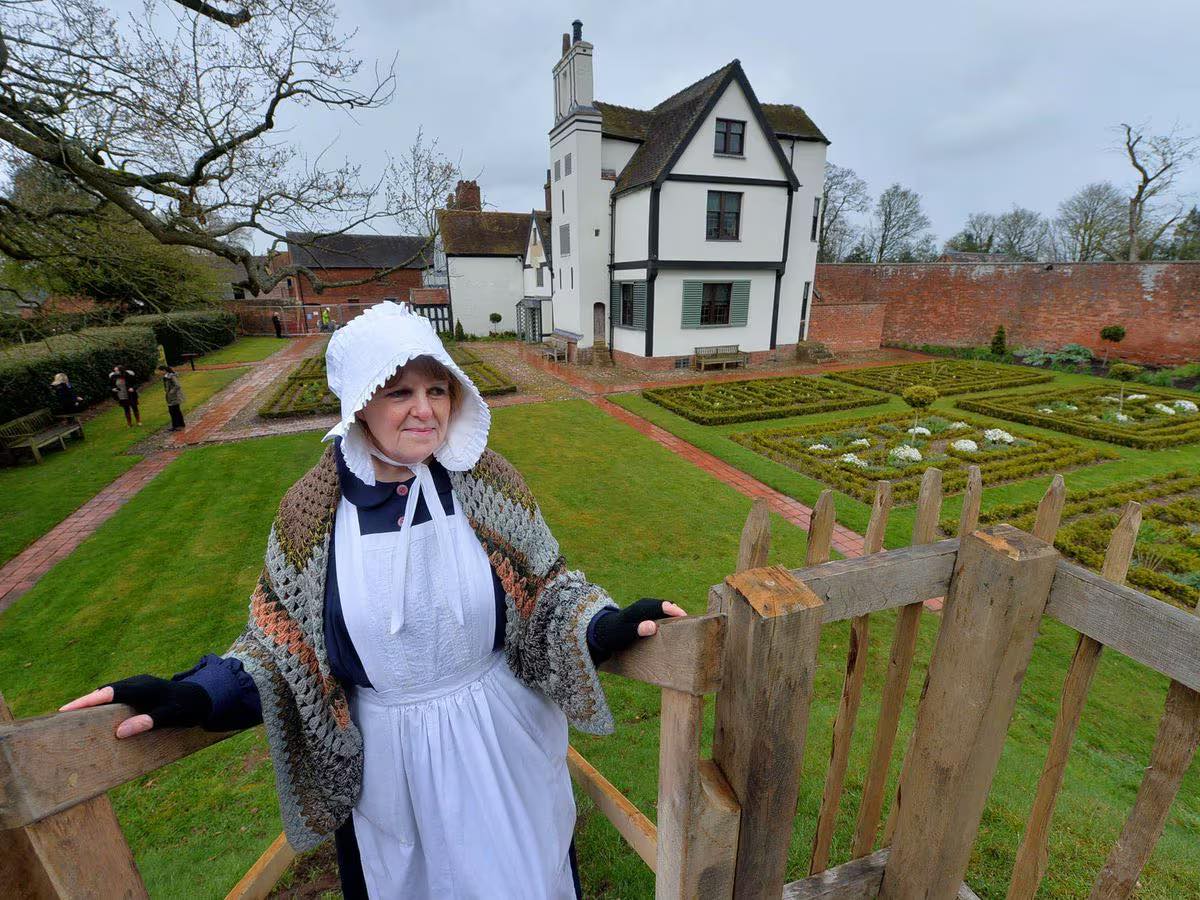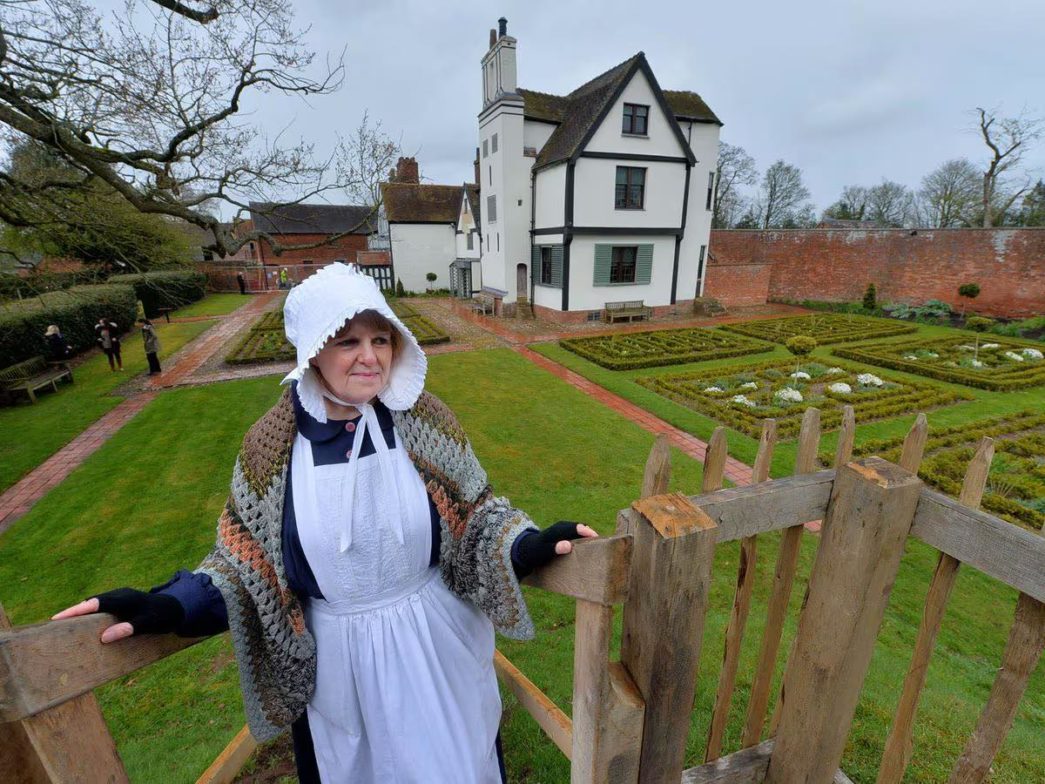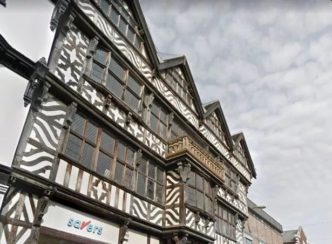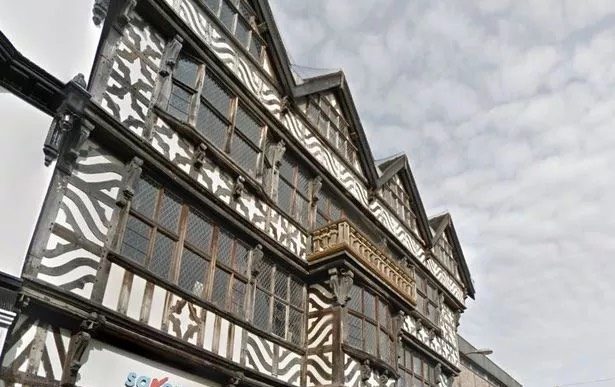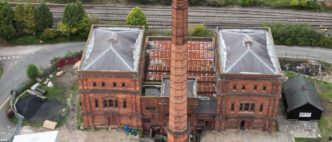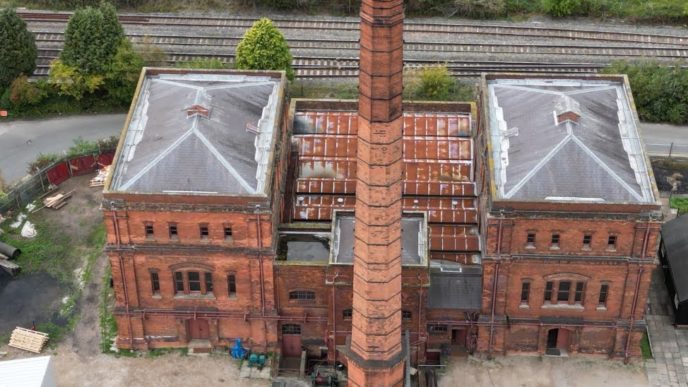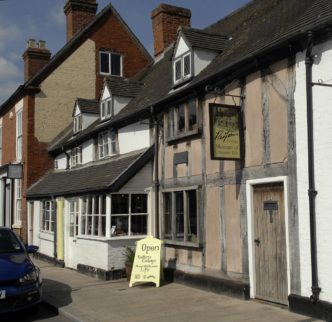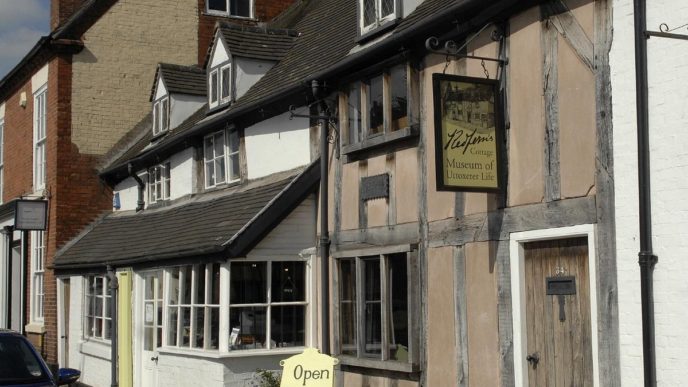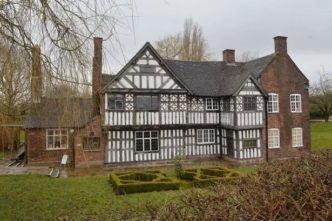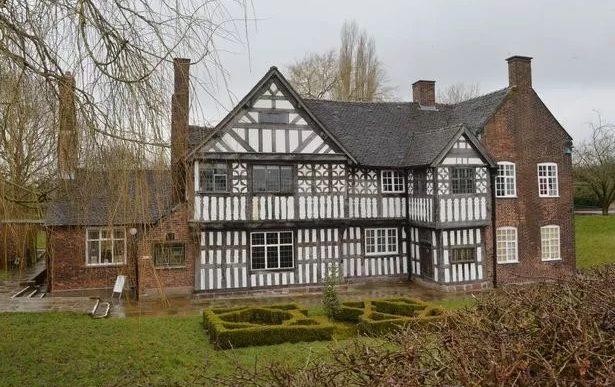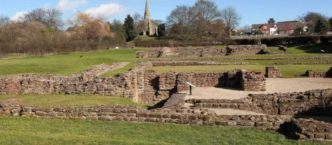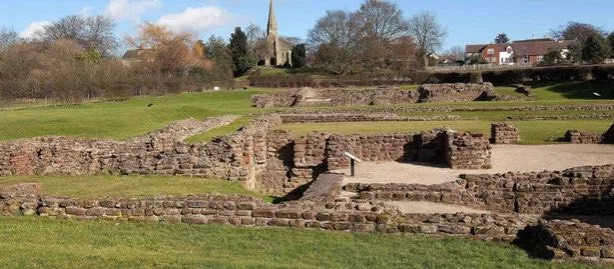Nestled amidst the verdant landscape near the Constitution Marsh, Boscobel House stands as a silent witness to history, with the Hudson River flowing tranquilly nearby. This historic treasure, not to be confused with the Military Academy at West, is a testament to the resilience and elegance of a bygone era.
Welcome to Boscobel House
Upon your arrival at Boscobel House, you’re transported back to an era of royal intrigue and architectural splendour. Standing proudly since the 17th century, this English manor tells the tale of King Charles II’s escape and the rich history that ensued. It’s a place where every brick and beam is steeped in stories, making it a significant piece of England’s heritage.
Boscobel House is important because of its intimate connection with King Charles II and the famed Royal Oak. This isn’t just any old manor; it’s the very place where a king once hid from his pursuers, marking it as a unique historical site. The house, with its priest holes and secret spaces, offers an authentic look into the past, unlike any other.
Boscobel House: A History
Witness Boscobel House’s legacy, having witnessed the tumultuous events of the Revolutionary War and withstood the test of time for over 10 generations.
The Majesty of Origins
Boscobel House was born out of the turmoil of 17th-century England. Founded in the early 1600s, it was originally conceived as a hunting lodge. The hands that laid its foundations belonged to the Giffard family, local landowners with a vision for a grand estate that would stand the test of time.
As the years rolled on, Boscobel evolved, reflecting the changing tastes and fortunes of those who called it home. It was a residence and a silent guardian of the surrounding Bishops Wood, witnessing the ebb and flow of English history from its secluded vantage point.
King Charles II’s Famed Escape
In the tapestry of Boscobel’s history, one thread stands out: the escape of King Charles II. After the Battle of Worcester in 1651, the king found refuge within Boscobel’s walls, a fact that would forever mark its place in history. The Royal Oak, a robust tree within the estate, became his sanctuary, hiding him from the Parliamentary forces.
Within the house, a priest’s hole served as another covert hiding spot, a testament to the ingenuity and bravery of those who risked their lives for the monarchy. This incredible story of survival and escape is woven into the very fabric of Boscobel, located in the heart of the West Midlands.
Milestones in History Post-Restoration
Since the monarchy’s restoration, Boscobel House has witnessed numerous milestones. It has served as a historic house open to the public, sharing its rich narrative with all who wander its halls. The oak tree under which Charles II hid has since become a symbol of the estate, and the hunting lodge has been lovingly preserved for future generations to experience.
Further enriching its historical landscape, the nearby Bishops Wood and Lilleshall Abbey contribute to the estate’s deep historical roots, dating back to the 16th century. Visitors can also explore the mound-topped remains of what was once a grand structure and join English Heritage members in celebrating events like the Diamond Jubilee amidst the timber-framed elegance of Boscobel House.
How to Get to this Gem
Reaching Boscobel House is a journey through picturesque countryside. If you’re driving, just follow the signs off the main roads, and you’ll find yourself at this hidden gem in no time. For those who prefer the train, the nearest station offers a scenic route that you can complete with a short taxi ride.
Public transportation brings you right to the doorstep of history. Buses run regularly to the area, making it easy for everyone to visit. If cycling is more your style, there are well-marked bike paths that lead you through the lush greenery straight to Boscobel.
And for the walkers among us, the footpaths are as inviting as they are historic. They wind through the West Midlands, offering a peaceful trek to the house. Whichever way you choose to travel, the journey to Boscobel House is as delightful as the destination itself.
What to See and Do at Boscobel House
From the echoes of royal footsteps to the tranquil beauty of its gardens, Boscobel House offers a unique window into England’s past.
A Journey Through the House
Step inside Boscobel House and you’ll feel history come alive. Each room tells a part of the story, from the grandeur of the State Rooms to the simplicity of the servant quarters. The interiors are a snapshot of different eras, each floor holding secrets of the past, making your exploration an engaging encounter with history.
The connection to bygone times is palpable, with furnishings and artefacts that speak of the lives once lived here. Wandering these halls is not just a tour; it’s a journey through the heart of England’s heritage.
The Enchantment of the Gardens
The gardens of Boscobel House are a delight for the senses. As you stroll through the blossoming landscape, you’ll find a variety of plants that paint a vibrant picture of the English countryside. The carefully tended beds and the wild beauty of the surrounding area blend seamlessly, creating a serene retreat.
With every step, the enchantment of the gardens reveals itself, offering a peaceful escape and a chance to ponder the lives of those who walked these paths centuries ago.
Modern Day Attractions
While Boscobel House is rooted in history, it also offers modern-day attractions that capture the imagination. Art exhibitions breathe new life into the ancient walls, showcasing the work of contemporary artists alongside the timeless backdrop of the house.
The beauty of these displays is magnified by the historical setting, creating a dialogue between the past and present. These events are not just a feast for the eyes, but also a way to connect with the vibrant arts scene that flourishes here.
Educational Opportunities
For families and school groups, Boscobel House presents a wealth of educational opportunities. Engaging programs bring history to life, making learning both fun and memorable. The house and its grounds serve as a classroom without walls, where every corner offers a lesson in England’s storied past.
Historical sessions invite visitors of all ages to immerse themselves in the rich array of events that shaped the nation. These experiences are more than just a day out; they’re an investment in understanding the heritage that defines us.
Tips for Making the Most out of Your Visit
Visiting Boscobel House can be more than just a day trip; it’s an opportunity to engage in activities that honour history. Imagine volunteering in the very gardens that royalty once admired, or participating in preservation efforts that keep the legacy of Boscobel alive for future generations.
Alongside these humanitarian efforts, there’s a chance to embrace patriotism by learning about the pivotal role Boscobel and the surrounding area played in England’s royal history. It’s not just about viewing the past; it’s about becoming a part of its ongoing story.
And don’t forget to make a stop at Weston Park while you’re in the area. Here you can continue your historical journey and enjoy the splendour of another of Staffordshire’s prized landmarks. Your visit to Boscobel House can be a truly enriching experience that goes beyond the ordinary.
Practical Information for Visitors
Before exploring Boscobel House, a historic house nestled in the heart of Bishops Wood, it’s essential to gather some practical information.
Map & Directions to the Historical Site
Getting to Boscobel House is a journey through picturesque Staffordshire countryside. Located near the village of Bishops Wood, the site is easily accessible by car. For those using satellite navigation, the postcode will guide you directly to the estate. Detailed maps and directions can be found on the English Heritage website or through various travel apps. The mound-topped landscape surrounding the area is a visual treat, guiding visitors to this gem of history.
If you’re travelling by public transport, the nearest train stations are in Wolverhampton and Telford, with local bus services running close to the house. Bicyclists are welcome, as the area offers scenic routes for a memorable ride to Boscobel House. Once you arrive, clear signage will lead you to the entrance.
Guide Prices and Ticket Booking
Exploring Boscobel House is an affordable adventure for individuals and families alike. Adult tickets are reasonably priced, while children can enjoy a discounted rate, making it a great family outing. It’s advised to check the latest prices online as they can vary during special events or exhibitions. Remember, English Heritage members can visit for free, adding extra value to their membership.
To avoid disappointment, especially during busy times, booking your tickets in advance through the English Heritage website is recommended. Online booking often provides a small discount and guarantees your entry on the day of your visit. Don’t forget to print your tickets or have them ready on your mobile device for a smooth entry process.
Seasonal Opening Hours
Boscobel House welcomes visitors with varying seasonal opening hours. During the summer, from April to September, you can visit any day of the week from 10 am to 5 pm. This gives you plenty of time to explore every nook and cranny of this historic gem. In the winter months, from October to March, the house is open from 10 am to 4 pm and is closed on Wednesdays and Thursdays, so plan your trip accordingly.
Remember that the last admission is always an hour before closing, so it’s best to arrive early to make the most of your visit. Also, the house may be closed on certain days for private events or maintenance, so do check their official website or call ahead to confirm the opening hours before you set off.
Amenities and Accessibility
Boscobel House is equipped with a range of amenities to ensure a comfortable visit for everyone. Restroom facilities are available on-site, including accessible options for visitors with disabilities. Parking is hassle-free, with spaces designated for cars, bikes, and coaches. The car park is close to the entrance, making it convenient for those with limited mobility or families with young children.
The historical site has taken great care to cater to all visitors. Paved pathways make most of the grounds accessible for wheelchairs and pushchairs. However, due to the nature of the historic buildings, some areas may not be fully accessible. Assistance dogs are welcome throughout the site, ensuring that no one misses out on the experience of Boscobel House.
Safety and Etiquette
Safety and respect for the historical environment are paramount when visiting Boscobel House. Here are some tips to ensure a safe and enjoyable experience:
- Stay on marked paths to protect the gardens and prevent accidents.
- Supervise children closely, especially near the ponds and in the woodlands.
- Do not climb on the historic structures or the oak tree, preserving them for future visitors.
- Avoid feeding any animals on the property to maintain their health and well-being.
Etiquette also plays a significant role in the enjoyment of all guests. Consider these tips:
- Keep noise to a minimum to respect other visitors and the tranquil setting.
- Dispose of rubbish responsibly in provided bins or take it home with you.
- Refrain from touching artefacts or displays to help conserve these precious items.
- Photography is allowed, but avoid using flash inside the house to protect delicate interiors.
Following these guidelines is important because it helps maintain the site’s integrity and ensures a pleasant visit for everyone. By adhering to these simple rules, you contribute to the conservation efforts and the ongoing enjoyment of Boscobel House.
Dining at Boscobel House
Enjoying a bite to eat during your visit to Boscobel House is part of the experience. The on-site tearoom offers a selection of local delicacies and traditional food that will tantalise your taste buds. Indulge in a slice of Victoria sponge cake or savour a Staffordshire oatcake, a regional speciality. The tearoom provides a cosy setting to relax and reflect on your visit.
For those looking for a heartier meal, the surrounding area boasts charming country pubs serving classic British fare, from fish and chips to a Sunday roast. Local ales and ciders are also on offer, giving you a true taste of Staffordshire. Seasonal ingredients feature prominently on menus, ensuring a fresh and delightful dining experience.
When the weather permits, picnicking on the grounds of Boscobel House is a delightful option. Bring your own spread and enjoy the picturesque views. The estate encourages responsible picnicking, meaning you should take any rubbish with you to keep the site clean for other visitors.
Whether you prefer a quick snack or a leisurely lunch, the dining options at and around Boscobel House cater to all appetites and preferences. Embrace the local culinary scene and make your visit to this historic site even more memorable.
Accommodation near Boscobel House
After a day of exploring Boscobel House and its famous oak tree, a comfortable place to rest is essential. The nearby area offers reputable hotels and inns where you and your family can relax. The King’s Head Inn, with its thriving Victorian farm charm, is a short drive away and provides cosy accommodations. Charles II famously took refuge in this area, and you can too, in a more modern and comfortable setting.
For a more luxurious stay, consider the stately elegance of Lilleshall Abbey’s converted accommodations. Here, you can spend the night in rooms that speak stories in English history, surrounded by serene gardens and historical grandeur. If you prefer a homely atmosphere, several bed and breakfasts offer a warm welcome and a hearty morning meal to start your day right.
Family-friendly options are available as well, ensuring that visitors of all ages have a pleasant stay. Look for establishments that cater to your needs, whether it’s a spacious family room or facilities like a swimming pool to keep the kids entertained. Remember to book in advance, especially during peak seasons, to secure your ideal accommodation.
With a variety of options to suit different budgets and preferences, the accommodations near Boscobel House ensure that your historical adventure doesn’t end with the sunset. Instead, you’ll find a restful retreat that complements the rustic and historical essence of your visit.
Boscobel Beyond: Exploring Nearby Attractions
After delving into the rich history of Boscobel House, why not explore more?
Moseley Old Hall and Wightwick Manor
For those with an appetite for history, Moseley Old Hall is a must-visit. This National Trust property played a pivotal role as another hiding place for King Charles II after the Battle of Worcester. The woodlands and gardens provide a serene backdrop to this story of royal refuge. Interactive exhibits and knowledgeable guides bring the past to life, making it a memorable stop for history enthusiasts.
Another nearby treasure is Wightwick Manor, an exquisite example of Victorian architecture and design. Here, you can wander through rooms adorned with Arts and Crafts movement furnishings and Pre-Raphaelite artwork. The manor’s gardens are equally impressive, offering a peaceful retreat with colourful blooms and manicured lawns. Both Moseley Old Hall and Wightwick Manor complement your visit to Boscobel House, enriching your journey through England’s storied past.
Baggeridge Country Park and Radford Meadows
Just a stone’s throw away from the historic Boscobel House, Baggeridge Country Park offers a serene escape into nature. Perfect for families and outdoor enthusiasts, the park has lovely walking trails, a children’s play area, and peaceful picnic spots. The change of pace is delightful, and you might even spot some local wildlife as you wander.
Adjacent to the country park, Radford Meadows beckons with its open green spaces and the opportunity to spot a variety of birds. It’s a favourite for dog walkers and joggers alike. Managed by the parish council, it’s well-kept and welcoming, providing a tranquil setting to reflect on the day’s historical adventures.
McArthurGlen Designer Outlet and Victoria Park
If you fancy a spot of shopping after delving into the past, the nearby McArthurGlen Designer Outlet is a must-visit. With a wide range of high-street and designer brands, it’s the perfect place to find a deal or two. The outlet also features ample parking and dining options, ensuring a comfortable visit.
For a more relaxed experience, Victoria Park offers beautifully manicured gardens and inviting walking paths. It’s an ideal location for a leisurely stroll or a family outing. The park’s well-maintained facilities, including changing areas, make it easy to spend an entire afternoon enjoying the scenery and the play areas.
Frequently Asked Questions
1. Can I see the original Royal Oak at Boscobel House?
While the original Royal Oak, famous for hiding King Charles II, no longer stands, a sapling grown from its acorns was planted on the same site. This descendant of the royal oak stands proudly on the grounds, allowing visitors to stand where history was made.
2. Is the upper floor of Boscobel House accessible to the public?
Yes, the upper floor of Boscobel House, with its timber framing and period furnishings, is open to visitors. As you explore the house, you can imagine the anxiety of Charles II as he evaded capture within these walls.
3. Are there any special events to commemorate the Restoration in 1660?
Boscobel House and the Royal Oak often host events and re-enactments, particularly around May 29th, known as Oak Apple Day, which celebrates the Restoration in 1660. These events bring the site’s rich history to life and are a treat for history enthusiasts of all ages.
Wrapping Up
As you leave Boscobel House, you carry with you stories of royal intrigue and a deeper appreciation for England’s past. The house, along with John Giffard’s courageous acts, remains etched in history as a symbol of loyalty and perseverance. It’s a tale that continues to captivate and educate those who walk through its doors.
The legacy of Boscobel transcends its walls and whispers through the leaves of the Royal Oak’s progeny. This chapter of English history, marked by bravery and survival, is a testament to the enduring spirit that shaped the nation. A visit here is more than just a walk through time; it’s an experience that connects you to the very heart of England’s storied past.

Experienced writer and journalist James McKean leads the daily editorial output at StaffsLive. To contact him, email news@staffslive.co.uk
